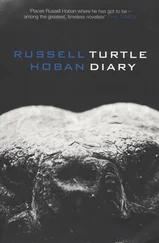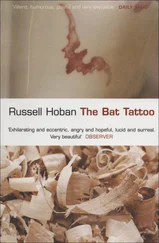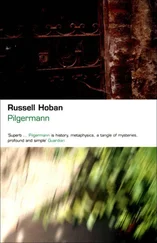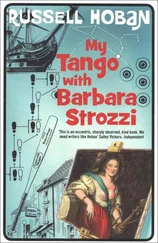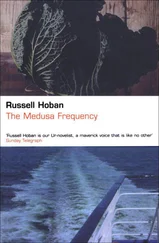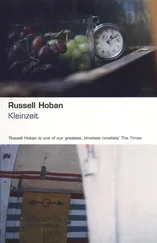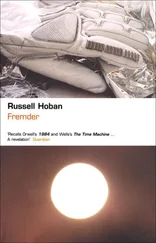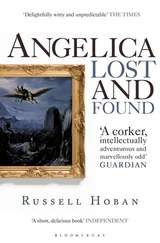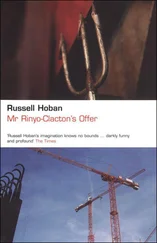‘Did someone have the film developed? Maybe his photographs showed how he died.’
‘I don’t know what happened to the film.’
‘How do you think he died?’
‘Perhaps the Erlking’s daughter reached out her hand and invited him to dance, not? Listen to this!’ She sang me ‘Herr Oluf’, accompanying herself on the accordion and giving me shivers of dread and delight. She was beautiful, my mother, tall and elegant. She wore her fair hair in a Louise Brooks ‘Lulu’ bob, not a style you saw very often in our town. Her voice was thrilling, and altogether there was something mythological about her. Her name is Anneliese, and I don’t know where she is now. When I was eleven she ran off with a tenor from a Pittsburgh opera company and became the myth of Anneliese. But that was still ahead, of us when she first sang ‘Herr Oluf to me. I was eight then and more of a rationalist than I am now. ‘Is that song like a fairy tale?’ I said.
‘I don’t know what to call it,’ she said.
‘But do you believe in the Erlking?’
‘The birches and the alders on the Teufelsmoor, in them lives something. You give it a name or you don’t. Now I must make supper.’
My mother when she sang to me was younger than this woman saying ‘Komm tanze mit mir!’ and seeming for a moment to be speaking in my mother’s voice. Green eyes this one had, red lips, pale, pale skin, pale hair. Cold and beautiful, like sparkling snow, frozen rivers, alders and birches sheathed in ice. Very slender, wearing a silvery top that was all tiny pleats, floaty and clingy at the same time. Wide silvery trousers the same. Silver boots with high heels. In her middle fifties, I thought, lit from within by that craziness that keeps some people young. Famous? Certainly she was used to being looked at. Had I seen her before tonight? I was drawn to her from the moment I saw her in front of The Cyclops. She didn’t stand absolutely still, there were always people getting between her and it — she’d step back and then move forward again to restore the connection. I could see that the painting had a powerful effect on her. I began to think that perhaps she felt herself to be that woman lying there naked, entering the dream of the cyclops and submitting to it. I felt, with a thrill of empathy, how it was with her and it excited me; I wanted to take her in my arms and feel her trembling against me. Then she suddenly seemed to be overwhelmed, she turned away abruptly and fled.
When I saw her again it was at drinks time after the exhibition. The room was crowded with men of means and women of the serious-acquisition class, either as found or expertly restored. Among us, elegant in black, passed the catering staff symbolising the transience of youth and beauty as they dispensed champagne, sushi, wonton dip, vegetable rolls, and smiles. The silvery green-eyed woman, as found, was standing in front of me, leaning towards me. ‘ Komm tanze mit mir!’ she said. She leaned closer, held my arm to keep from falling and said again, ‘Komm tanze mit mir!’
I was surprised that she knew ‘Herr Oluf’ and even more surprised that she’d singled me out to say those words to. I asked her if she was German — she wasn’t — she asked me if I was, and we got into a rather odd little conversation which she broke off to go to the loo. She was gone a long time, and in her absence I mentally replayed the action from my first sight of her in front of The Cyclops. Certainly it’s a powerful painting and I had responded strongly to her response to it. But had she found it nauseating? She’d rushed off with her hand to her mouth the way people do when they’re about to vomit. This time she’d said she had to pee but I was beginning to wonder about her bladder.
After a while the drinks table was cleared and people were queueing up to collect their things at the cloakroom, so I went to the ladies’ to look for her and we had another odd little conversation through a cubicle door. Not the sort of thing I ordinarily do but I couldn’t let go of the specialness of our meeting. She allowed me to slip my name and phone number under the door, wouldn’t tell me her name, and said she’d phone me.
Near the cloakroom I found Peter Diggs and Amaryllis whom I’d first met at one of Peter’s shows at the Nikolai Chevorski gallery. Amaryllis has been called ‘the Waterhouse nymph’ by Peter because she could have posed for any one of that Victorian master’s many enchantresses. She teaches piano and is said to be very good at it; in her unpianistic hours she has long since come out as a weirdo. ‘What did you think of the show?’ she said.
‘Terrific,’ I said. ‘I’ve never seen that many Redons and there were Bresdins that I never knew about.’
‘I saw you talking to Christabel Alderton,’ said Peter. ‘Do you know her?’
‘Christabel Alderton!’ I said. ‘That’s why I thought I might have seen her before. I don’t know her at all, never met her until just a little while ago. She used to sing with …’ I was trying to remember the band. ‘Death on Speed?’
‘Mobile Mortuary,’ said Amaryllis. ‘They don’t do as many gigs in this country as they used to but they’re at the Hammersmith Apollo this Friday’
We chatted for a bit about Peter’s new show. The theme was ‘Death and the Maiden’ and most of the paintings had red dots stuck on the frames when I turned up to have a look. Death was a beautiful pale young man, naked and mostly in shadow so that you could never quite make out how well endowed he was although he left them for dead; all the maidens were variations of Amaryllis and they were naked too. Maidens to die for, one might almost say. DEATH NEVER HAD IT SO GOOD was the headline of Noah Thawle’s review in the Guardian.
I’d heard from our mutual friend Seamus Flannery that Peter had gone through a dry spell after Amaryllis moved in with him. ‘Too much happiness,’ said Seamus. ‘He lost his empty spaces for a while. But with Amaryllis he’s always in a state of uncertainty so he got his empties back. The consensus is that Amaryllis will stay beautifully weird for a very long time, so Peter can look forward (with or without her) to a good stretch of productivity’
We went our separate ways then and I was alone in the cold with my thoughts and questions about Christabel Alderton. The lights of Piccadilly shining through the entrance arch made moony glimmers on the little fountain puddles in the Royal Academy forecourt. I started walking to Green Park tube station and a 19 bus loomed hugely as it dopplered towards me symbolising the mystery of redness. The Burlington Arcade, bereft of Christmas lights, sat like Patience on a monument, waiting for the next wave of tourists with strong currency. Across the road, spotlit Grecian columns of a used-to-be bank rose augustly from China House restaurant. The Ritz Hotel, also spotlit, stood with the ghosts of Januarys past, holding its place in the winter night above the swarming headlights, the roar of traffic and the rush of time. Everything seemed to refer to something else, and in my head Christabel Alderton the Erlking’s daughter sang me past green banks and dancing elves, down Piccadilly to the tube station, not with ‘Herr Oluf’ but with two violins, a viola and a cello and the music of the Schubert Quartet No. 14, ‘Death and the Maiden’. SHARES PLUNGE AGAIN, said the headline on the Evening Standard kiosk.
I took the Piccadilly line to Earl’s Court, where people on the platform seemed more watchful than they used to be, or maybe I was. When the train came there were plenty of seats. I sat next to a sleek young man who was reading a piece on The Times COMMENT page headed THE UNITED STATES OF AMERICA HAS GONE MAD, by John le Carre. His mobile rang. ‘Hi, Jeremy,’ he said. ‘Sorry I didn’t ring you back, it was just one thing after another all day.’ Pause. He lowered his voice. ‘Well, are you surprised? Don’t you watch the Footsie and the Dow Jones?’ Pause. ‘Yes, I know. But that was then, this is now. “You gotta know when to hold, know when to fold, etc.’” Pause. ‘Well, yes, I’m sorry too. Ciao.’ He shook his head and went back to John le Carre.
Читать дальше

